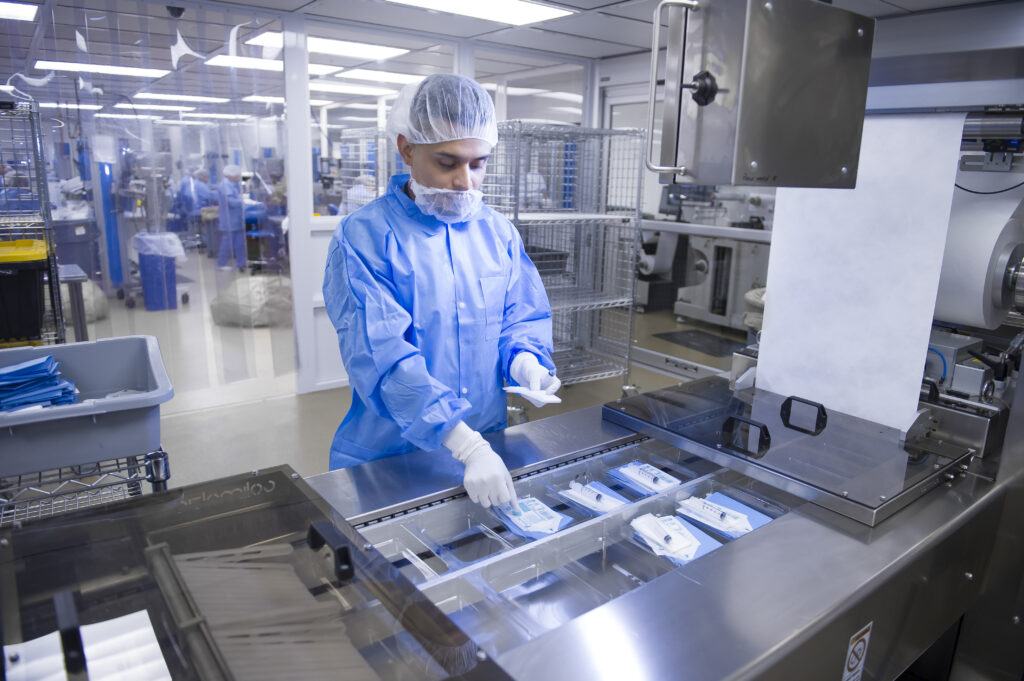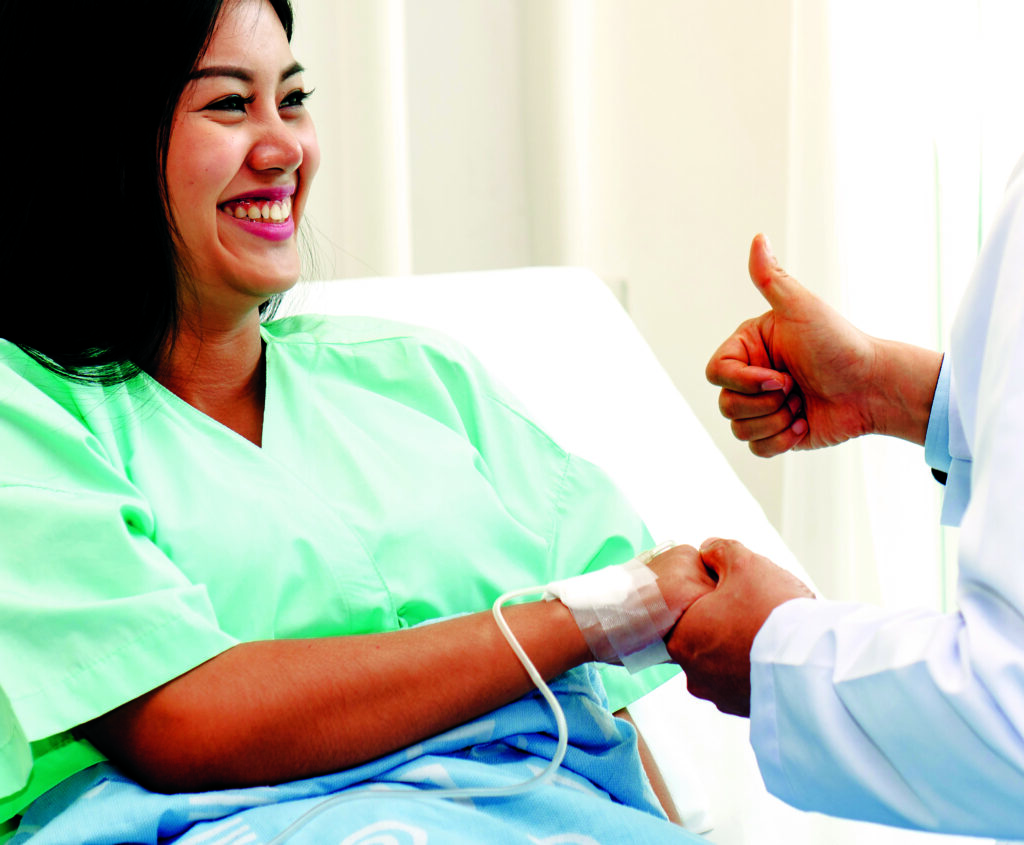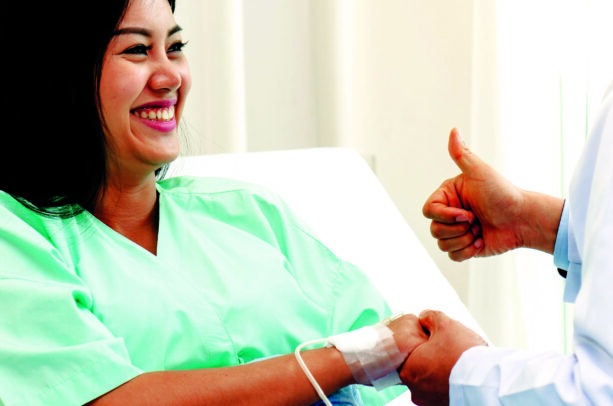Medical Device Kitting – Unlocking Efficient, High-Quality Patient Care
Surgical doctors and nurses work in fast-paced, emergency situations, and they need the right tools at their disposal in the right configuration. They are making immediate decisions in a pressurized environment, and they need the proper components and equipment presented in a package that makes it easy to find what they need quickly. One of the tools that helps promote efficient, high-quality care are medical device kits that organize all of the necessary components in one place in an easy-to-use format.
By bundling and organizing all necessary components, medical device kitting makes it easier for doctors to use the components effectively. From assembling surgical kits and packaging implants to organizing medical supplies, kitting offers an opportunity to elevate operational efficiency.
What is medical device kitting?
Medical device kitting refers to the process of assembling and packaging medical devices, components, and supplies into a unified kit or package. It involves organizing all the necessary items, such as instruments, implants, tools, and instructions, into a single cohesive unit.
The purpose of medical device kitting is to streamline healthcare workflows by providing healthcare professionals with readily accessible and well-organized kits. This process saves time, improves efficiency, reduces errors, and enhances cost-effectiveness for the end user.
But what are its benefits?

Importance of medical device kitting in the healthcare industry and its benefits
With the advancement of healthcare technology, medical device kitting plays an increasingly important role in delivering high-quality care. One of the key reasons why medical device kitting is important is its ability to save time and improve efficiency. But there are also many other benefits such as:
- Streamlined Workflow:
Medical device kitting simplifies and streamlines healthcare workflows by providing doctors and nurses with organized kits that contain all the necessary components. This eliminates the need for time-consuming searches and the gathering of individual items, allowing healthcare providers to focus more on delivering efficient and timely patient care.
- Time and Cost Savings:
By having all the required components readily available in a single kit, medical device kitting saves valuable time for healthcare professionals. Its time-saving aspect translates into increased productivity, reduced procedure durations, and improved patient throughput. Additionally, medical device kitting helps optimize inventory management, minimizing the risk of overstocking or understocking supplies and reducing unnecessary costs.
- Error Reduction:
Medical device kitting plays a significant role in reducing errors in healthcare settings. By bundling all the required components into kits, it minimizes the risk of missing items or incomplete sets. This ensures that healthcare professionals have all the necessary tools and supplies readily available, reducing the likelihood of errors, omissions, or delays in patient care.
- Standardization and Consistency:
Medical device kitting promotes standardization and consistency in healthcare procedures. Through packaging specific components together, healthcare providers can ensure that the same tools and supplies are used consistently across different procedures or within a specific healthcare facility.
- Regulatory Compliance:
Medical device kitting helps healthcare organizations comply with regulatory requirements. By packaging and labeling medical devices and supplies appropriately, kitting ensures compliance with regulations related to traceability, sterility, labeling, and quality control. This is crucial in maintaining patient safety and meeting industry standards.
Types of Medical Device Kitting Services
When it comes to medical device kitting services, various types are available to cater to the diverse needs of healthcare providers and medical device manufacturers.
- Customized Kitting:
Customized kitting is tailored to the specific requirements of individual healthcare providers or specialized procedures. It involves designing and assembling kits that include the exact combination of medical devices, instruments, supplies, and instructions needed for a particular application. Offering flexibility and customization, it allows healthcare providers to optimize their workflow and enhance efficiency.
- Standard Kitting:
Standard kitting involves the assembly process and packaging of medical devices, components, and supplies into standardized kits that are widely applicable across various healthcare settings. These kits typically contain commonly used items and instruments that are essential for general medical procedures. Standard kitting provides healthcare providers with ready-to-use kits that can be easily accessed and deployed in a wide range of clinical or surgical scenarios.
- Emergency Kitting:
Emergency kitting is focused on providing rapid response kits for emergency situations. These kits are carefully designed to include critical medical devices, supplies, and equipment needed to handle emergencies or disasters. They are readily accessible and ensure that healthcare providers can respond quickly and effectively in urgent situations, saving valuable time and potentially lives.
Each type of medical device kitting service offers distinct advantages based on the specific requirements and preferences of healthcare providers. By choosing the appropriate type of service, healthcare providers can ensure that they have the right tools and supplies at the right time, promoting smoother operations and better patient care.

Medical Device Kitting Process
As we explored the different types of medical device kitting services available to healthcare providers and medical device manufacturers, let’s take a closer look at the medical device kitting process itself and how it brings these services to life.
The medical device kitting process is a strategic and systematic approach to assembling and packaging medical devices, components, and supplies into cohesive kits or packages. It’s a vital part of the healthcare supply chain, ensuring that healthcare professionals have the necessary tools and supplies at their fingertips, ready to provide efficient and effective patient care.
This process involves a series of steps, from assessment and planning to quality control and distribution. Each step is carefully executed to ensure the accuracy, integrity, and compliance of the kits.
- Assessment and Planning:
The process begins with an assessment of the specific requirements and needs of the healthcare provider or medical device manufacturer. This involves understanding the scope of the project, identifying the necessary components, and determining any special considerations, such as regulatory compliance or specific packaging requirements. Based on this assessment, a comprehensive plan is developed to guide the medical kitting process.
- Component Procurement and Inventory Management:
Once the requirements are established, the next step is to procure the necessary components. This involves sourcing the medical devices, instruments, tools, supplies, and instructions that will be included in the kits. This step is crucial to ensure an adequate supply of components and prevent delays in the kitting process.
- Kit Design and Assembly:
Based on the assessed needs and planned requirements, the kits are designed to include specific components in an organized and user-friendly manner. This may involve selecting the appropriate packaging materials, arranging the components in a logical order, and incorporating any necessary labeling or instructions. The kits are then assembled, ensuring that each one contains the correct components and meets the designated standards.
- Quality Control:
Quality control is a critical aspect of the medical device kitting process. Thorough checks and inspections are conducted to ensure the accuracy, integrity, and compliance of the kits. This may involve verifying the contents, checking for any damaged or expired components, and confirming that all labeling and documentation are accurate and up-to-date.
- Packaging and Labeling:
Once the kits have passed quality control, they are appropriately packaged to ensure their safety and integrity during storage and transportation. The packaging may involve sterile barrier systems, tamper-evident seals, or protective casings, depending on the specific requirements of the components and the intended use of the kits. Clear and accurate labeling is applied to each kit, providing essential information such as contents, expiration dates, lot numbers, and any specific handling instructions.
- Distribution and Inventory Management:
After packaging, the kits are prepared for distribution to the healthcare provider or other end-users. Proper inventory management systems are implemented to track the kits, monitor stock levels, and facilitate timely reordering to maintain an adequate supply.
With a well-orchestrated series of steps, the kitting process ensures that healthcare professionals have the necessary tools and supplies readily available for efficient and effective patient care.
Compliance and Regulatory Considerations
We have already mentioned the importance of quality control in the medical device kitting process. In addition to maintaining quality standards, it is essential to consider compliance with regulatory requirements.
Medical device kitting comes with specific regulatory considerations that healthcare providers and medical device manufacturers must adhere to.
- Regulatory Agencies and Standards:
Medical device kitting must comply with regulations set forth by regulatory agencies such as the U.S. Food and Drug Administration (FDA) in the United States or the European Medicines Agency (EMA) in the European Union. These agencies establish guidelines and standards for various aspects, including labeling, packaging, sterilization, and traceability.
- Traceability and Documentation:
One crucial aspect of regulatory compliance in medical device kitting is traceability and documentation. Maintaining a transparent and accountable process is essential to meet regulatory requirements and ensure patient safety. Traceability involves the ability to track and document every stage of the kitting process, from component procurement to kit assembly and distribution process. It enables the identification and documentation of key information such as lot numbers, expiration dates, and any changes or modifications made during the process.
- Sterility Assurance:
Many medical devices require sterile packaging to maintain their efficacy and prevent contamination, which makes compliance with sterilization protocols throughout the kitting process vital. This includes following proper sterilization techniques, using sterile barriers, and ensuring that all necessary precautions are taken to maintain a sterile and controlled environment.
- Labeling and Instructions for Use:
Properly labeled kits enable healthcare professionals to identify and use the components correctly, enhancing patient safety and ensuring compliance with labeling regulations. Labels must contain essential information such as the contents of the kit, lot numbers, expiration dates, manufacturer details, and any specific handling or storage instructions.
- Adverse Event Reporting:
Healthcare providers and medical device manufacturers must comply with regulations that require reporting of any adverse events or incidents associated with the use of medical devices. They should have processes in place to promptly identify and report any adverse events related to the kitted medical devices, which may help regulatory agencies monitor device safety and make informed decisions.
- Quality Management Systems:
Implementing a robust quality management system involves establishing standardized processes, conducting regular audits, maintaining documentation, and continuously improving the kitting process. Compliance with quality management standards, such as ISO 13485, demonstrates a commitment to quality and compliance.
Compliance with regulatory requirements is of utmost importance in the medical device kitting process. Meeting these standards ensures the safety, efficacy, and quality of medical devices and promotes patient well-being.
However, it’s not always easy for healthcare providers and medical device manufacturers to navigate the complex regulatory landscape on their own. This is where partnering with the right medical device kitting provider can make a significant difference.
Choosing the Right Medical Device Kitting Partner
Choosing the right medical device kitting partner is an important decision that can significantly impact your operations and patient care. A potential partner should be carefully evaluated based on many factors such as:
- Expertise and Experience: Obviously, expertise and experience are the first two things to look for. A potential partner should have a deep understanding of medical devices, components, and packaging requirements, as well as a deep knowledge of regulatory compliance, industry best practices, and emerging trends.
- Regulatory Compliance: Ensure that your kitting partner has a strong track record of adhering to relevant regulations, such as FDA or ISO standards. They should have robust quality management systems in place to ensure compliance and maintain the highest standards of quality and safety.
- Flexibility and Customization: Look for a kitting partner that can provide flexible and customized kitting solutions tailored to your specific needs. They should be able to accommodate different kit configurations, packaging materials, labeling requirements, and any other special considerations you may have.
- Scalability and Capacity: As your business grows, your kitting needs may evolve. Choose a partner who can scale their operations to meet your changing demands. They should have sufficient capacity, resources, and infrastructure to handle large-scale kitting projects without compromising quality or delivery timelines.
- Supply Chain Integration: Consider a partner who can collaborate effectively with your existing suppliers, logistics providers, and other stakeholders. This ensures smooth coordination and minimizes disruptions in the supply chain.
- References and Reputation: Before making a final decision, seek references and conduct thorough research on potential kitting partners. Look for testimonials, case studies, or client references that demonstrate their track record of success, customer satisfaction, and long-term partnerships in the healthcare industry.
- Communication and Collaboration: Effective communication and collaboration are key to a successful partnership. That’s why it is important to choose a kitting partner who values open and transparent communication. They should actively engage with you, provide regular updates on project progress, and be responsive to your needs and concerns.
Once you have considered these factors and narrowed down your options, it’s recommended to engage in further discussions with the potential kitting partners. Schedule meetings or site visits to get a better understanding of their operations, capabilities, and company culture. This will allow you to assess their compatibility with your organization and determine if they align with your goals and values.

Conclusion: Unlock Efficiency and Enhance Patient Care with Medical Device Kitting
Throughout this journey, we have explored the various benefits of medical device kitting, compliance and regulatory considerations, and also the importance of choosing the right medical device kitting partner. And that’s exactly where companies like ours step in.
Working with a variety of clients, we have witnessed firsthand the significant impact that medical device kitting has in the healthcare industry. By streamlining workflows, reducing errors, and improving inventory management, medical device kitting enables healthcare professionals to focus on what matters most—delivering a high level of quality care to their patients.
We invite you to take the next step and reach out to Pro-Tech Design & Manufacturing today to see if we’re the right fit for your medical device kitting needs.
Together, let’s improve patient care, provide easy-to-use and efficient kits, and streamline their assembly.

